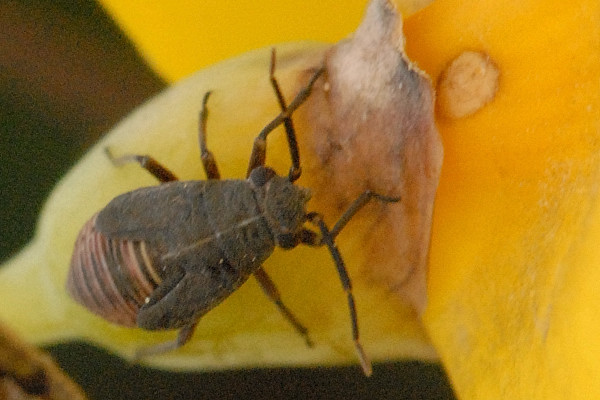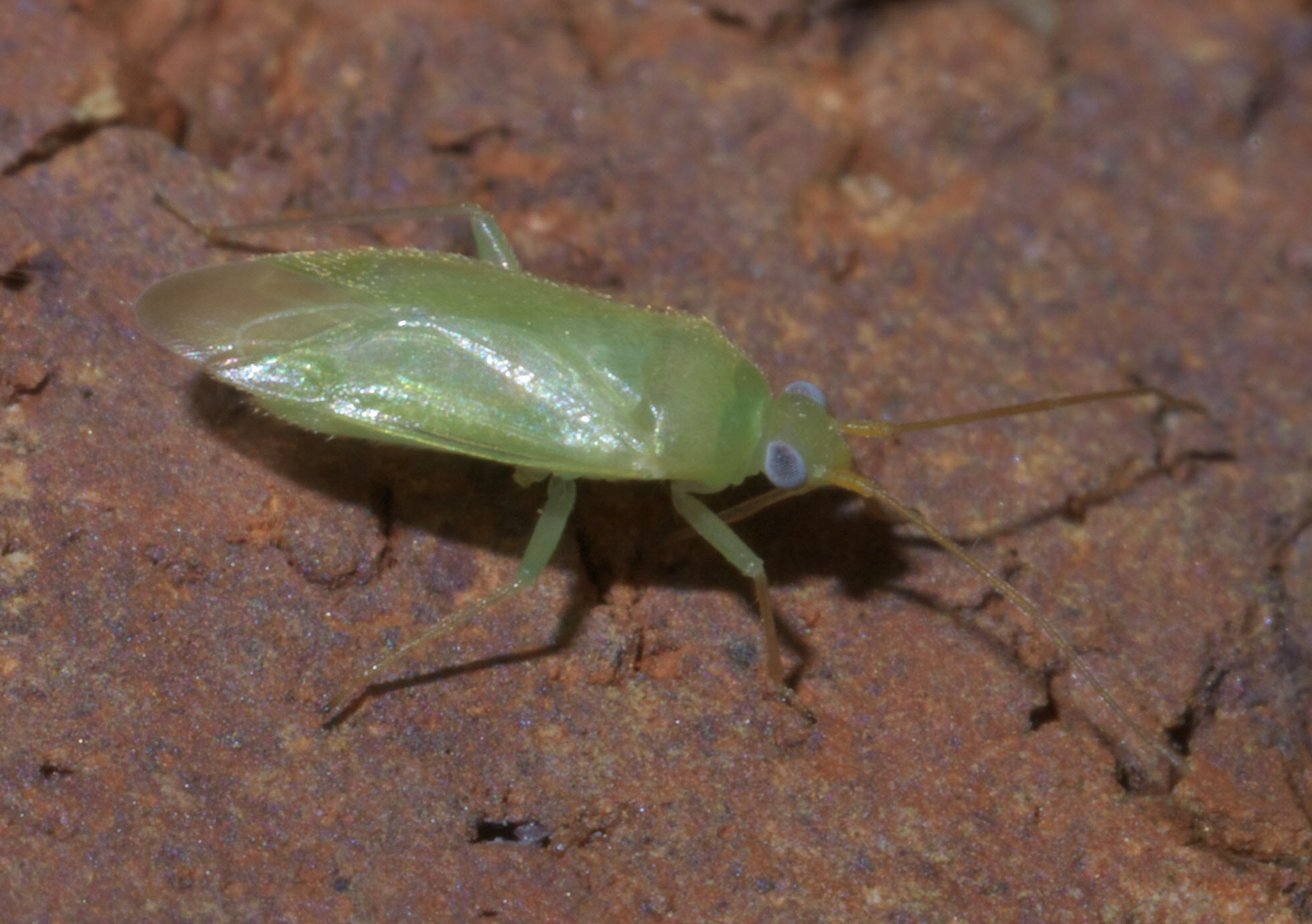|
Orthotylinae
Orthotylinae is a subfamily of plant bugs in the family Miridae. There are at least 650 described species and at least 70 genera in Orthotylinae. The Orthotylinae have traditionally been diagnosed by their possession of lamellate, apically divergent parempodia. Tribes ''BioLib'' includes: Orthotylinae Van Duzee, 1916 # Austromirini Carvalho, 1976 ## '' Austromiris'' Kirkaldy, 1902 ## '' Dasymiris'' Poppius, 1911 ## '' Fronsetta'' Cassis, 2008 ## '' Kirkaldy ... [...More Info...] [...Related Items...] OR: [Wikipedia] [Google] [Baidu] |
Orthotylinae
Orthotylinae is a subfamily of plant bugs in the family Miridae. There are at least 650 described species and at least 70 genera in Orthotylinae. The Orthotylinae have traditionally been diagnosed by their possession of lamellate, apically divergent parempodia. Tribes ''BioLib'' includes: Orthotylinae Van Duzee, 1916 # Austromirini Carvalho, 1976 ## '' Austromiris'' Kirkaldy, 1902 ## '' Dasymiris'' Poppius, 1911 ## '' Fronsetta'' Cassis, 2008 ## '' Kirkaldy ... [...More Info...] [...Related Items...] OR: [Wikipedia] [Google] [Baidu] |
List Of Orthotylinae Genera
This is a list of 71 genera in the subfamily Orthotylinae. Orthotylinae genera * '' Acaciacoris'' Schaffner, 1977 * '' Anapus'' Stål, 1858 * '' Aoplonema'' Knight, 1928 * '' Aoplonemella'' * '' Apachemiris'' Carvalho and Schaffner, 1974 * '' Argyrocoris'' Van Duzee, 1912 * '' Ballella'' Knight, 1959 * '' Blepharidopterus'' Kolenati, 1845 * '' Brachynotocoris'' Reuter, 1880 * '' Brooksetta'' Kelton, 1979 * '' Ceratocapsus'' Reuter, 1876 * '' Ceratopidea'' Knight, 1968 * '' Coridromius'' Signoret, 1862 * '' Cyrtorhinus'' Fieber, 1858 * '' Daleapidea'' Knight, 1968 * '' Diaphnidia'' Uhler, 1895 * '' Dichaetocoris'' Knight, 1968 * '' Ephedrodoma'' Polhemus & Polhemus, 1984 * '' Fieberocapsus'' Carvalho and Southwood, 1955 * '' Hadronema'' Uhler, 1872 * '' Halticus'' Hahn, 1832 (fleahoppers) * '' Heterocordylus'' Fieber, 1858 * '' Heterotoma'' Lepeletier & Serville, 1825 * '' Hyalochloria'' Reuter, 1907 * '' Ilnacora'' Reuter, 1876 * '' Ilnacorella'' Knight, 1925 * '' Jobertus'' Dista ... [...More Info...] [...Related Items...] OR: [Wikipedia] [Google] [Baidu] |
Miridae
The Miridae are a large and diverse insect family at one time known by the taxonomic synonym Capsidae. Species in the family may be referred to as capsid bugs or "mirid bugs". Common names include plant bugs, leaf bugs, and grass bugs. It is the largest family of true bugs belonging to the suborder Heteroptera; it includes over 10,000 known species, and new ones are being described constantly. Most widely known mirids are species that are notorious agricultural pests that pierce plant tissues, feed on the sap, and sometimes transmit viral plant diseases. Some species however, are predatory. Description Miridae are small, terrestrial insects, usually oval-shaped or elongate and measuring less than in length. Many of them have a hunched look, because of the shape of the prothorax, which carries the head bent down. Some are brightly coloured and attractively patterned, others drab or dark, most being inconspicuous. Some genera are ant mimics at certain stages of life. The Mirida ... [...More Info...] [...Related Items...] OR: [Wikipedia] [Google] [Baidu] |
Ceratocapsini
Ceratocapsini is a tribe of plant bugs in the family Miridae. There are about 7 genera and at least 80 described species in Ceratocapsini. Genera These seven genera belong to the tribe Ceratocapsini: * '' Ceratocapsus'' Reuter, 1876 * '' Pamillia'' Uhler, 1887 * '' Pilophoropsidea'' Henry * '' Pilophoropsis'' Poppius, 1914 * '' Renodaeus'' Distant, 1893 * '' Schaffneria'' Knight, 1966 * '' Sericophanes'' Reuter, 1876 i c g b Data sources: i = ITIS, c = Catalogue of Life, g = GBIF, b = Bugguide.net References Further reading * * * * * * * * * * * External links * Hemiptera tribes Orthotylinae {{miridae-stub ... [...More Info...] [...Related Items...] OR: [Wikipedia] [Google] [Baidu] |
Halticini
Halticini is a tribe of plant bugs in the family Miridae. Genera ''BioLib'' includes the following: # '' Acratheus'' Distant, 1910 # '' Anapomella'' V.G. Putshkov, 1961 # '' Anapus'' Stål, 1858 # '' Barbarosia'' Kiyak, 1995 # '' Chorosomella'' Horváth, 1906 # '' Coridromius'' Signoret, 1862 # '' Dampierella'' Tatarnic, 2009 # '' Dasyscytus'' Fieber, 1864 # '' Dimorphocoris'' Reuter, 1891 # '' Ectmetopterus'' Reuter, 1906 # '' Euryopicoris'' Reuter, 1875 # '' Goodeniaphila'' Tatarnic, 2009 # '' Halticus'' Hahn, 1832 (fleahoppers) # '' Labopella'' Knight, 1929 # '' Labops'' Burmeister, 1835 # '' Microtechnites'' # '' Myrmecophyes'' Fieber, 1870 # '' Namaquacapsus'' Schuh, 1974 # '' Nanniella'' Reuter, 1904 # '' Nesidiorchestes'' Kirkaldy, 1902 # '' Orthocephalus'' Fieber, 1858 i c g b # '' Pachytomella'' Reuter, 1891 # '' Piezocranum'' Horváth, 1877 # '' Plagiotylus'' Scott, 1874 # '' Platyporus'' Reuter, 1890 # '' Schoenocoris'' Reuter, 1891 # '' Scirtetellus'' Reuter, 1890 # ' ... [...More Info...] [...Related Items...] OR: [Wikipedia] [Google] [Baidu] |
Malacocoris Chlorizans
''Malacocoris chlorizans'' (commonly known as delicate apple capsid) is a species of ''plant bugs'' belonging to the family Miridae, subfamily Orthotylinae. Description The species is green coloured and is long. Distribution It is found in Europe (mainly absent from Albania, Azores, Canary Islands, Cyprus, Faroe Islands, Iceland, Liechtenstein, Madeira, Malta and North Macedonia). and east to the Caspian sea. Ecology ''Malacocoris chlorizans'' is found in deciduous trees, especially in hazel where it feeds on mites and aphid Aphids are small sap-sucking insects and members of the superfamily Aphidoidea. Common names include greenfly and blackfly, although individuals within a species can vary widely in color. The group includes the fluffy white woolly aphids. A t ...s. Adults fly from May to October.Ekkehard Wachmann, Albert Melber, Jürgen Deckert: ''Wanzen. Band 2: Cimicomorpha: Microphysidae (Flechtenwanzen), Miridae (Weichwanzen) (= Die Tierwelt Deutschlands und der ... [...More Info...] [...Related Items...] OR: [Wikipedia] [Google] [Baidu] |
Cimicomorpha
The Cimicomorpha are an infraorder of insects in the order Hemiptera, the true bugs. The rostrum and other morphology of all members apparently is adapted to feeding on animals as their prey or hosts. Members include bed bugs, bat bugs, assassin bugs, and pirate bugs. The two infraorders Cimicomorpha and Pentatomorpha have very similar characteristics, possibly as a result of the evolution of plant feeding. The key similarity that unites the Cimicomorpha and Pentatomorpha is the loss of the arolia (adhesive pads) on the pretarsi of the insects. These two infraorders comprise 90% of Heteroptera species. These insects are a part of the old, informal classification of “Geocorisae” (land bugs). Among these bugs, parental care has evolved several times. Parental care varies from brooding of the eggs by the female, to a more active form that involves protection of young against predators and the female covering the nymphs under her body. Superfamilies and families ''BioLib'' in ... [...More Info...] [...Related Items...] OR: [Wikipedia] [Google] [Baidu] |
Arthropoda
Arthropods (, (gen. ποδός)) are invertebrate animals with an exoskeleton, a Segmentation (biology), segmented body, and paired jointed appendages. Arthropods form the phylum Arthropoda. They are distinguished by their jointed limbs and Arthropod cuticle, cuticle made of chitin, often Mineralization (biology), mineralised with calcium carbonate. The arthropod body plan consists of segments, each with a pair of appendages. Arthropods are bilaterally symmetrical and their body possesses an exoskeleton, external skeleton. In order to keep growing, they must go through stages of moulting, a process by which they shed their exoskeleton to reveal a new one. Some species have wings. They are an extremely diverse group, with up to 10 million species. The haemocoel, an arthropod's internal cavity, through which its haemolymph – analogue of blood – circulates, accommodates its interior Organ (anatomy), organs; it has an open circulatory system. Like their exteriors, the internal or ... [...More Info...] [...Related Items...] OR: [Wikipedia] [Google] [Baidu] |
Orthotylini
Orthotylini is a tribe of plant bugs in the family Miridae. There are more than 230 described genera in Orthotylini. Selected genera The following genera belong to the tribe Orthotylini: * '' Acaciacoris'' Schaffner, 1977 * '' Aoplonema'' Knight, 1928 * '' Aoplonemella'' Forero, 2008 * '' Apachemiris'' Carvalho and Schaffner, 1974 * '' Argyrocoris'' Van Duzee, 1912 * '' Ballella'' Knight, 1959 * '' Blepharidopterus'' Kolenati, 1845 * '' Brachynotocoris'' Reuter, 1880 * '' Brooksetta'' Kelton, 1979 * '' Ceratopidea'' Knight, 1968 * '' Cyllecoris'' Hahn, 1834 * '' Cyrtorhinus'' Fieber, 1858 * '' Daleapidea'' Knight, 1968 * '' Diaphnidia'' Uhler, 1895 * '' Dichaetocoris'' Knight, 1968 * '' Ephedrodoma'' Polhemus & Polhemus, 1984 * '' Fieberocapsus'' Carvalho and Southwood, 1955 * '' Hadronema'' Uhler, 1872 * '' Hadronemidea'' Reuter, 1908 * '' Heterocordylus'' Fieber, 1858 * '' Heterotoma'' Lepeletier & Serville, 1825 * '' Hyalochloria'' Reuter, 1907 * '' Ilnacora'' Reuter, 1876 * ' ... [...More Info...] [...Related Items...] OR: [Wikipedia] [Google] [Baidu] |

.jpg)



